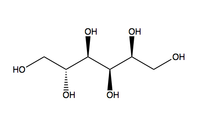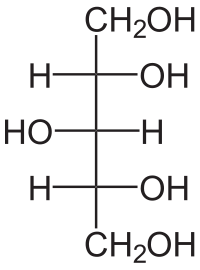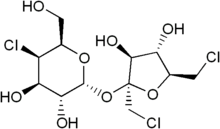( – promoted by buhdydharma )
Hello, folks. Here is another installment regarding the things that we eat. Remember, I am a trained expert in the field (I used to head one the few “Megalabs” for FDA) so I know of what I speak. This time we will talk about non-nutritive sweeteners since we all use them from time to time, even if we do not know it.
I was going to talk about the drugs that Michael Jackson took before he died a short time ago, but the information is still dribbling out from the Coroner’s office, and I want the whole story before I add my opinion about it. But be assured that I will weigh in when the story is out in the open.
First, some housekeeping. As I have said many times previously, I bought my last commercial cigarette in March of this year. I still roll my own, using Prince Albert tobacco and Top papers, but I am cutting down a bit now. I love my smokes, but they are getting further and further apart.
Second, the divorce between Mrs. Translator and me is on track, and it is still very amicable. We have agreed on over 90% of the details, and the remaining 10% is just the things that we had not thought about previously. Neither of us are out to hurt the other, so I am optimistic that this heartrending activity (for both of us) will be over within a month or so.
Third, Eldest Son is getting ready to marry his high school sweetheart this coming December. I could not be happier for both of them. She is a brilliant and attractive person, as is he. Please join with me to wish them well. I will attempt to provide some wedding pictures when the event happens.
There are many sweeteners, most of which are very caloric. Sugar, honey, corn syrup, and high fructose corn sweetener are very commonly used, and have about four calories per gram. Some taste a little sweeter than the others, but there is not more than about a half again difference between them. Sucrose, table sugar, is the standard, and we shall use its subjective sweetness as one (1) on our scale.
Now, this is only one criterion, but seems to be the most important one when a new sweetener is marketed. I would suggest that there are a couple of others. A very important one is “mouth feel”, the subjective feeling that a sip of sweet material has in one’s mouth. Sucrose, table sugar, has a very different mouth feel than does, say, aspartame, because sucrose in water solution, at the same sweetness as aspartame, is actually viscous (“thick” in popular nomenclature) and coats the tongue differently. Most diet soft drinks contain gum arabic (also called gum acacia) to thicken the beverage slightly to mimic the mouth feel of sugar sweetened drinks.
The other important one is “aftertaste”. Table sugar (sucrose) just sort of diminishes its same first taste as it leaves the taste buds. Almost without exception, the non-nutritive sweeteners leave a bitter (at least to me) aftertaste as they go away, and I do not find that to be pleasant. Saccharin is particularly prone to do this in my experience.
Now, to the science. Table sugar (sucrose) is a disaccharide with the structure that will be shown presently. It is the most common sugar, other than fructose and glucose, covered in a previous installment here. Sucrose is the gold standard to which all other sweeteners are compared. Sucrose is a dimer of glucose and fructose, as I posted in another installment, and is familiar to everyone.

Sucrose
There are several natural products that resemble sucrose, or at least fructose or glucose. The most common ones are sorbitol and xylitol. They are metabolized differently than sugar is, mainly being digested in the gut by bacteria, but not all of them are digested. They do not raise blood glucose as much as sugar does, so are useful in diabetic products. However, since not all of the materials are digested, they can act as a osmotic laxative when taken in large amounts, so go easy on them. The small amount that is in chewing gum marketed not to promote tooth decay is unlikely to cause problems, but a large bowl of sorbitol sweetened ice cream can. Whilst they taste sweet, they also have a cooling taste, expecially xylitol.


Sorbitol Xylitol
These are pretty much natural products with sweetening power close to sucrose, give of take a few per cent. The sweeteners that are of interest are much sweeter than sucrose, and a couple of them are natural products. I will defer discussion of them until the bottom of this essay.
The oldest artificial sweetener still in use is saccharin, in the form of its sodium salt. (Saccharin in the free base form is not water soluble). It was developed in the 19th century in a research laboratory at Johns Hopkins University, and its sweetness was discovered by accident. This led to a falling out between the researchers because the graduate student took out a patent and became wealthy over it, whilst the major professor got nothing, vexing him greatly.

Saccharin
Saccharin has had a long regulatory history, beginning over a hundred years ago. The United States Department of Agriculture tried to ban it in 1908, purportedly on health concerns, but I do not buy that. USDA is in the business of promoted agriculture, and the sugar lobby was about as powerful then as it is now, to USDA went to bat for them. Numerous studies have been conducted over the decades, and no study has linked saccharin intake with any human disease. USDA tried to ban it again in 1972 (interesting, because FDA, not USDA has jurisdiction over it), but failed. FDA tried in 1977 to ban it, but due to the public outcry, the Congress got involved and banned the ban. A warning label was required suggesting a link to cancer, but those studies have been shown to contain serious problems that render them unreliable. The warning label was removed in 2000, and few people remember it. Saccharin was the only artificial sweetener available in the United States for a number of years, after cyclamate was banned here.
I personally dislike saccharin very much. First of all, I do not think that it tastes much like sugar. Second, to me it has the worst aftertaste of all of the artificial sweeteners. It does have an advantage in that it does not deteriorate in solution like aspartame does, so soft drinks sweetened with saccharin have a long shelf life. If I were the only one drinking saccharin sweetened products, the shelf life would approach infinity. The relative sweetening power of saccharin compared to sucrose is 300 if one sets sucrose at 1.
Since we mentioned cyclamate, let us discuss it even though it is not available in the United States. It was also discovered by a graduate student who accidentally contaminated a cigarette with it in 1937. When he smoked it, he immediately discovered the sweetening effect of it. It hit the mass market in 1958, and was very popular until it was banned by FDA in 1969, based on some of the same studies that almost got saccharin the ax. It is marketed in Europe and Canada (saccharin is banned in Canada).

Sodium Cyclamate
I remember the old diet drinks from the 1960s and they actually tasted pretty good. I was especially fond of Fresca at that time. Cyclamate has less of an aftertaste than saccharin, at least to me. Folks from Canada, please comment on your recent experience with it. Cyclamate is stable to heat, making shelf life of drinks sweetened with it long. The problem is that it is only about 30 times sweeter than an equivalent amount of sugar, so quite a little has to be used.
The most commonly used artificial sweetener in the US as aspartame. This was developed in the 1960s at Searle and also was found to be sweet by accident. This seems to be a recurrent theme, and is unlikely to happen much in future because of better laboratory hygiene.

Aspartame
This material has been mired in controversy since it was first approved by FDA in 1974. That approval was belayed in 1975, and it was finally approved for dry foods in 1981. In 1983 us was approved for use in soft drinks. Interestingly, this was during a Republican administration (remember, the FDA Administrator is a political appointment, witness the fact that Scotty McClellan’s (the BUsh spokesman) brother served as FDA Administrator during Bush’s term), and the CEO of Searle at the time was one Donald Rumsfeld. Yes, that Rummy. Small world. This and some other events caused a wave of conspiracy theories that the material is actually harmful and the FDA ignored it, that political pressure was applied, and so forth.
I do not buy all of that. In my opinion, asparatame is safe in reasonable quantities for most people. Some folks have idiosyncratic reactions to different things, so it is indeed possible to be especially sensitive to aspartame. I was watching on of those medical shows on the TeeVee and there was a case of a guy whose heart would arrest when he drank ice water, so anything is possible. I can say for sure that the ingredients in aspartame are safe, being two amino acids that occur naturally in proteins in food, and a methyl group. Aha! the critics say, that methyl group produces methanol when metabolized, and that is wood alcohol, and that is poison. Well, better give up strawberries and wintergreen, as those contain methyl esters as well. The only real health concern is that the phenylalanine component of the molecule is not good for people with phenylketonuria, a genetic condition where the enzyme necessary to metabolize phenylalanine is absent. Those folks have severe dietary restrictions to limit phenylalanine as much as possible.
Another artificial sweetener used in soft drinks is acesulfame (in the form of the potassium salt). This was discovered in 1967 and approved as a sweetener by FDA in 2001. It seems to have quite a bit of aftertaste, at least to me, and is often combined with other artificial sweeteners to mask some of its aftertaste.

Acesulfame Potassium
Acesulfame does not seem to have generated the controversy that aspartame has, and studies have pretty much shown it to be safe. I think that part of the lack of controversy has to do with its relative obscurity, limited mostly to soft drinks, and not all of them. Its relative sweetness is about 200, not quite as sweet as saccharin.
The fastest growing non-nutritive sweeteners is sucralose. It is a chlorinated derivative of sucrose, and as the Splenda brand the adverts allude to it being somehow natural (“…it tastes like sugar because it is made from sugar…”). Well, alcohol is made from sugar, too, and it does not taste like sugar to me, but the implication that sucralose is natural lasts.
This material was first discovered in 1976 and approved in the US in 1998. Here is the structural formula. Look at it and then the one for sucrose at the top of this essay and there is indeed a close resemblance.

Sucralose
Most studies show this material to be safe, but there has been relatively little time from discovery to marketing compared with some of the other sweeteners. It has a decided advantage over others in that it does not have a really bad aftertaste and in that it also stands up to the heat of cooking, so can be used a sugar substitute in many recipes. I worry about chlorinated organics in the diet, but sucralose is extremely water soluble, rather than fat soluble, so it does not tend to accumulate in the body. Another big advantage is that it is around 600 times sweeter than sucrose, or twice as sweet as saccharin. Thus the bag of Splenda that is equal to five pounds of sugar contains about 0.13 OUNCES of active material, the rest being bulking agents so you can measure it with ordinary utensils.
I was originally going to cover a couple of the natural products used recently as sweeteners, but just ran out of time tonight. Maybe we can finish this up next time.
Well, you have done it again. You have wasted a perfectly good batch of photons reading this poor excuse for a post. And even though Michael Steele goes off character and speaks the truth when he hears me say it, I always learn much more than I could ever hope to teach writing these posts, so keep those comments, questions, corrections, and thoughts coming.
UPDATE: Folks, the Geek is tired tonight. I shall check tomorrow evening for more comments.
Warmest regards,
Doc
Crossposted at Dailykos.com

22 comments
Skip to comment form
Author
sweet stuff?
Warmest regards,
Doc
1993
Detox period for family of five in Europe=2 weeks
Other detox/retox episodes noted after camping in wooded areas of Maine and subsequent return to polluted areas north of Boston Mass.
Avoid getting banned from kos for bringing up such tin foil hat subjects and take some of those new flavored water products into a dark room and expose them to UV light.
Diet anything has always tasted like battery acid to me as do these new flavored waters. It is my psychic defense mechanism at work.
Author
Thanks! I appreciate it.
Warmest regards,
Doc
anything about stevia? I heard it is used in Japan and other countries but not O.K.ed in the U.S.
First, it is good to see that you are trying to quit the tobacco habit. As someone who has never smoked but understands the addiction, I am pulling for your complete withdrawal.
Second, it is good to hear that you and the mrs. are still being amicable.
Third, best wishes for your son and his bride. I will be looking for those pictures.
Now as to the substance of your diary, this is information that everyone, especially dieters and diabetics, should have. Since I am an advocate of “as natural as possible”, I don’t use any of these sweeteners and I avoid processed sugar. I can actually smell processed sugar in very minute amounts in food and drinks. I am an obsessive label reader when I shop. Having one of my undergrad degree in Bio-Chem, if I can’t pronounce it or don’t know what it is, I’m not eating it and that includes preservatives. I haven’t had a soda in years and I don’t miss it.
Great to see your diaries, I hope everything else is looking better for you.
I try not to eat things that only look like food but aren’t. If it’s made in a lab it’s not food, imo.
Doc, I appreciate your efforts and respect your knowledge, but I must disagree 100% with you on the safety of aspartame.
Aspartame breaks down when heated into it’s various toxins – methyl alcohol, formaldehyde, etc. It’s very easy to claim that this will never happen with the product on the shelf, but it happens all the time. The stuff sits in trucks in 110 degree weather and it starts to break down.
A diabetic I know used to drink diet soda products sweetened with aspartame all the time, she had hellacious health problems and the look on her face when I told her about it was one of utter horror.
I avoid “Rumsfeld juice” like the plague these days. I will only consume it as a last resort. I have moved to having stevia with my tea. As a result I’ve gone down two sizes (and these days the way my jeans hang on me it might be safe to say three) and I feel a lot better.
Splenda is also not my frienda, I do not feel that sufficient FDA testing was done on this product before it went to market. I get nasty headaches when I have Splenda.
The way that stevia was banned for sale in stupormarkets until recently should tell you just how much the beverage industry controls the government in this country. Until Coca Cola shoved a non-peer-reviewed paper down the FDA’s throat, no stevia product was allowed to be sold in mainstream stupormarkets unless it was labelled as a “dietary supplement”. Additionally, most of the mainstream stevia extracts, including Coca Cola’s “Truvia”, are PADDED WITH DEXTROSE, as is Splenda. What is the point of using these products if the objective is to eliminate sugar from one’s diet?
I highly recommend Sweet Leaf stevia extract. It is available for a reasonable price in bulk, can be purchased over the internet if not available in stores near someone who needs it, and it is NOT padded with dextrose or other sweetening agents.